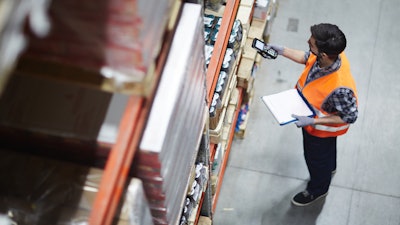
In part one of our look at Industrial Distribution's 2022 Survey of Distributor Operations, we examined the industry's use of technology and distributors' overall views on the economy.
Today, an overview of balance sheets, best practices, managing a workforce, and the value of the distributor in a difficult environment.
The Balance Sheet
Sales are up for 83 percent of respondents, a reversal of fortunes after 2020 and early 2021 laid waste to many a balance sheet. In fact, this is nearly double the number who were touting sales increases when we deployed our last survey, March of 2021.
And despite the narrative that inflation and rising material costs are dinging profitability, the vast majority of our respondents (72 percent) say profits are up as well. Nineteen percent said that profits had fared about the same and nine percent say they are lower this year. Last year at this time, only 43 percent were claiming increased profits.
And as high demand continues to drive both sales and profits, distributors are clearly optimistic about what lies ahead, with 78 percent expecting increases in sales next year and 22 percent expecting them to remain consistent with this year. No respondents suggested that their sales would decrease. And when it comes to supporting this growth, distributors have a variety of business development strategies they hope to employ. They consider the following to be key for growth:
- Selling more via e-commerce (48%)
- Hiring more employees (47%)
- Improving/redesigning their websites (42%)
- Driving more traffic to their websites (40%)
- Adding more product lines (39%)
Best Practices
The pandemic had a way of galvanizing challenges that were building up for years prior and the manufacturer-distributor relationship can be difficult to manage in the best of times. In 2020, it seems businesses reached across the aisle to help manage unprecedented pandemic-related issues but 2021 brought rising tensions. Last year, 38 percent of respondents said they believed their relationships with key suppliers had gotten worse. It’s hard to decipher whether things have settled: while 22 percent say their supplier relationships have gotten worse, the vast majority (59 percent) say their relationships with suppliers have stayed the same as last year. Only 19 percent overall say their relationships have improved.
When it comes to the level of support distributors say they’re receiving from suppliers, 40 percent say it’s gotten worse and 51 percent say it’s the same. More stark are the responses to the question of whether suppliers have raised prices: this year, 93 percent say yes, compared to 86 percent last year and 89 percent in 2020.
Are suppliers offsetting these price increases to help distributors muddle through? Our survey respondents emphatically say no, with 76 percent not being privy to any special offers. For those who are getting some relief, it comes in the way of co-op advertising and marketing (16 percent); technical assistance (10 percent) and reduced shipping fees (10 percent).
Distributors still prize quality when it comes to supplier selection, 79 percent say this is one of the most important criteria in evaluating suppliers. Others include:
- Price (57%)
- On-time delivery (56%)
- Service/support (46%)
- Reputation (21%)
Other notable business strategies from this group of distributors include:
- Vending: 22 percent currently offer industrial vending and another nine percent say they plan to offer it in the future.
- Global: Half of surveyed distributors conduct business outside of the United States, or hope to within the next few years.
Value of the Distributor
If anything, this past year has given distributors a chance to show their worth along the supply chain, and as end users struggle to fill talent gaps, they increasingly turned to key suppliers for services and support.
And it remains true, based on our survey results, that distributors are still largely providing services as a value-add to their accounts. When we asked our survey respondents how much revenue they derived from services, the majority (56 percent) said between one and 10 percent. Another 14 percent said it was zero.
For those who do charge for some of their services, certain ones were more likely to be targeted. For example:
- 80 percent charge for shipping
- 34 percent charge for design/engineering consultation
- 30 percent charge for setup/installation
- 30 percent charge for fabrication or kitting
- 25 percent charge for inventory management
And as it pertains to vendor managed inventory initiatives, 48 percent of respondents say they have them underway currently.
Finally, many distributors continue to enhance their value proposition by utilizing the resources of the robust network of coops and buying groups in the industrial sector. Thirty percent of our survey respondents say they’re involved in a buying group, 3 percent in a coop and 13 percent in both.
Employment
This might just be the most taxing year in decades when it comes to managing a workforce. As employees flee in droves in search of higher pay, more flexibility or culture change, businesses have been left picking up the pieces, all while trying to avoid downtime.
So how have distributors fared throughout this “Great Resignation?” It’s been a struggle, with 52 percent saying that turnover has been higher this year than it was in years prior. This comes despite efforts by these companies to retain workers with the following perks:
- Higher pay/pay for performance (70%)
- Improved benefits package (56%)
- Training (39%)
Do these stack up? Not in the minds of our survey respondents, almost none of whom rated their company’s strategy for recruiting and retaining employees as “excellent.” More commonly, the respondents said these efforts were fair (48 percent), with 32 percent saying they were good and six percent poor. One respondent commented that their company doesn’t offer an employee more money until they have another job lined up.
Fifty-five percent of our respondents say they’ve added staff in the past year and 27 percent anticipate doing so in the coming year. Additions are largely being made in sales and warehouse positions, followed by operations and customer support. While 38 percent of last year’s survey respondents expected to cut staff this year, only 11 percent say they’ve actually done so. For those who have reduced staff, cuts were made in clerical, operations and sales positions, predominantly. For more distributor respondents, the number of sales reps they employ has stayed the same (54 percent), while 29 percent say they’ve added sales positions in the past year.
Ninety-seven percent of respondents say hiring technically trained employees is either “somewhat” or “very important,” although it’s possible these expectations need to be modified in order for distributors to capitalize on the available workforce. Currently, 47 percent say they are not able to find suitable (available and qualified) job applicants, which suggests distributors may need to make some changes to who and how they recruit.






















